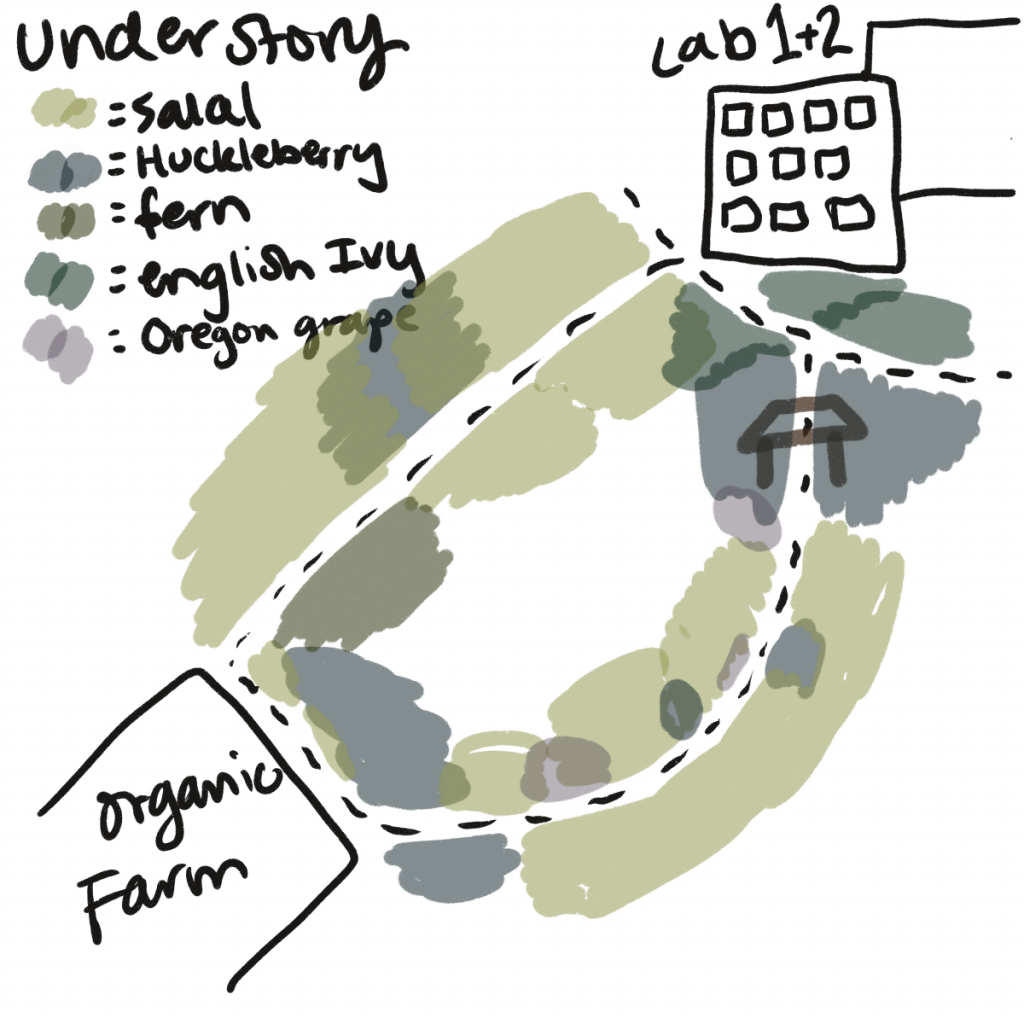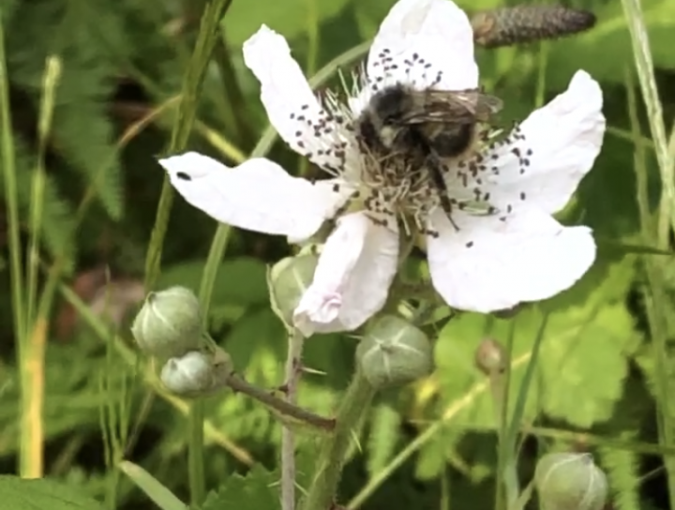On these posts I’ll be sharing what I learn, do, and taste weekly. The components of my week include (with slight variations):
A: Natural history/regen ag research
B: Habitat assessment/improvements
C: Film and media analysis
D: Tasting research
E: Sensory analysis
F: Special events
G: Cooking
H: References

Week 2 habitat assessment
My first step assessing the Organic Farm was to find out what the dominant species are in the surrounding 1/2 mile. I found that the dominant species in the area are native, with select residential locations populated by non-native landscaping plants, and some small areas colonized by invasive english ivy (Hedera helix). The most dominant understory plants I noticed were salal, huckleberry, fern, english ivy, and oregon grape. The dominant overstory plants were douglas fir, western red cedar, red alder, and western hemlock.
It might be beneficial to revisit this question at a time of year when deciduous woody plants such as salmonberry and small maple trees are leafed out.
I would rate the dominance of native species in the 1/2 mile area a 10.



Estimating % natural area 
Some details from the trail to main campus 
My notes on what species dominate the area 
Details from the trail to campus

I plan on planting phacelia from Caleb and some wildflowers from Northwest Meadowscapes in the community garden. I’ll be planting alongside the greenhouse and hopefully near the picnic table.

References
- MacKinnon, A., Pojar, J., & Alaback, P. B. (1994). Plants of the Pacific Northwest coast: Washington, Oregon, British Columbia & Alaska. Richmond, Wash: Lone Pine Publishing.
